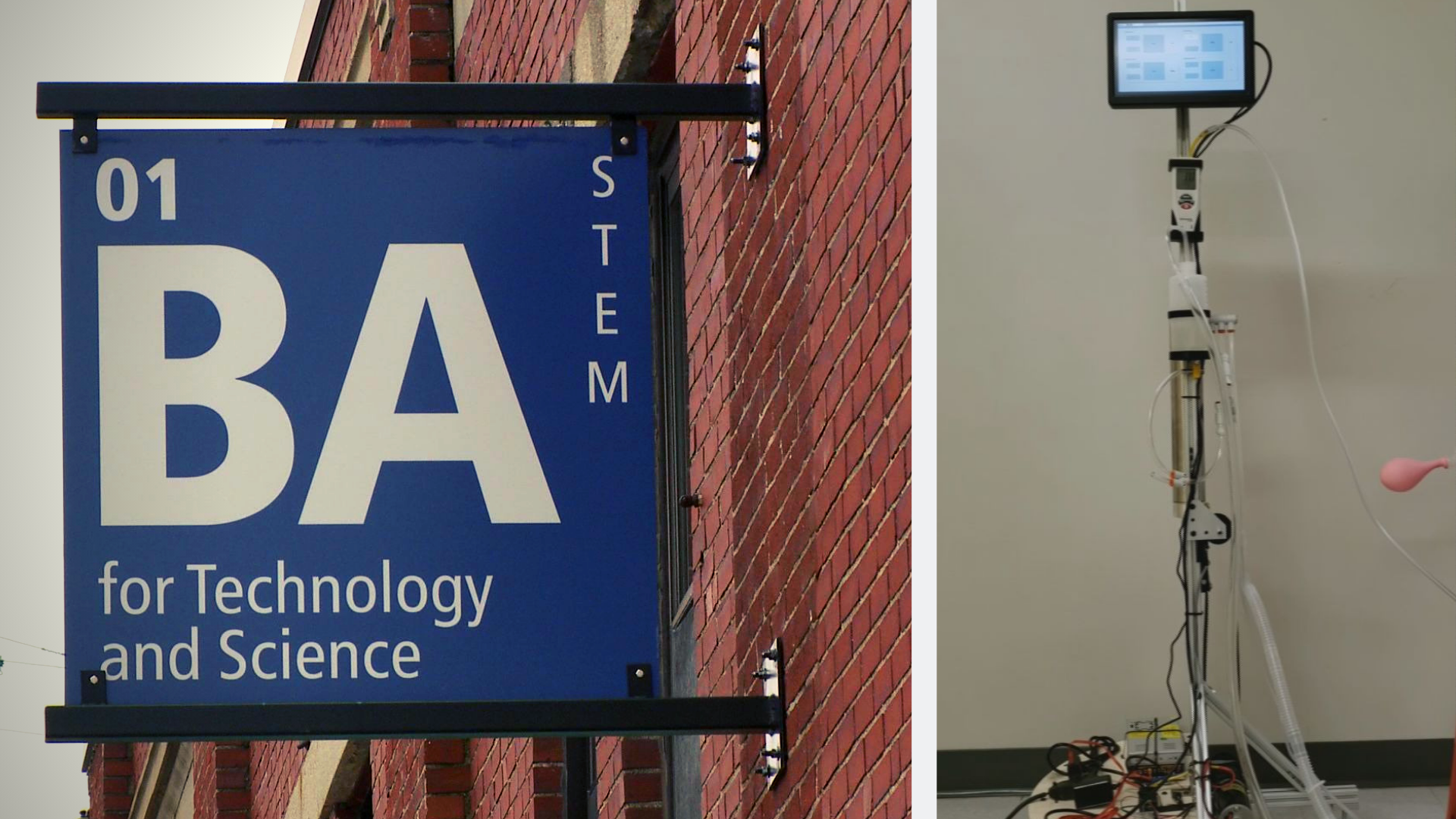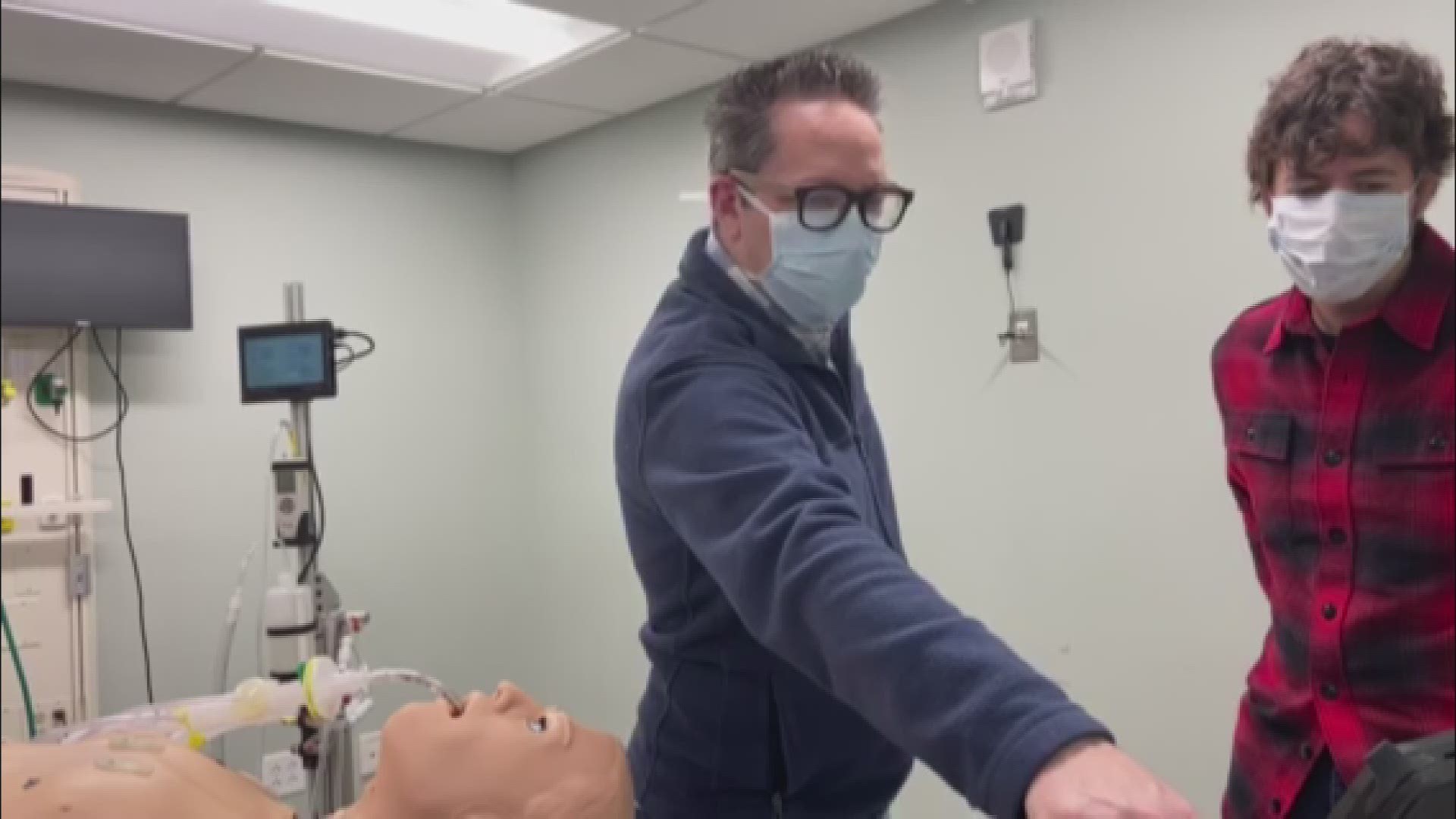PORTLAND, Maine — Update:
Students and their engineering teacher at Baxter Academy designed, built, and tested an emergency ventilator using off-the-shelf parts, with only a few tools and for a price tag of $1,500. Baxter Academy's ventilator was entered into a competition at Mass General in Boston a couple of weeks ago that is aiming to find the most rapidly deployable ventilator.
There were 213 entries from around the world and Baxter Academy's prototype made it to the top seven. They are the only high school group to make it to the finals and now have until June 1st.
The group is working on adding some new sensors to enhance the ventilators' capabilities. The winning ventilator design will get help from organizers to get medical approval and then be manufactured.
Engineers like to solve problems and there is no exception in Baxter Academy's engineering teacher Jon Amory. In March, when Amory saw the critical shortage of medical ventilators facing hospitals as they try to help patients afflicted with COVID-19, he started doing research.
"I drew up some schematics, did some calculations and said this is something that I could produce," Amory said.
Although he was quickly convinced he could build one, he wanted to create an emergency ventilator that even under dire circumstances could be built and used by almost anyone. To do that he decided it needed to be built inexpensively, using over-the-counter parts, and only a few tools. It also had to be simple to build. "Anyone who can put together something from Ikea, has a basic knowledge of putting things together, can build it."
"It's one thing to produce one ventilator in one lab, it's another thing to produce something anyone can build."
Amory knew that he could put the machine together most efficiently by himself bouncing ideas off his colleagues but he wanted to include his students. He reached out to them about the project. It wasn't required and there would be no grade. Dozens of students wanted to help.
Working remotely, through virtual meetings a group of about twenty current and former students began to meet and work on the ventilator, including Junior Dennis Slobodzian who has been working on the controls. The ventilator is built on what looks like an iv stand and is controlled with a touch screen pad. It has a motor that controls a belt that goes up and down.
"Basically my job was to make sure that the motor could move in the correct way that we wanted it to," Slobodzian explained. He needed to work on the device in person but is not leaving his home, so his Amory brought it over to him so he could work on it for a few days.
"I was working from 8 a.m. to 8 p.m. on that thing making sure that it would work for a demo," Slobodzian said.
"It was definitely a worry that we need to make it the best product that we can to make sure it's reliable so we don't harm anyone and once that sunk in it was definitely something that is kind of crazy to think about what these things can do in the real world," Slobodzian said.
Also working on the controls from his apartment in Cambridge, Mass. is MIT graduate student, Baxter Academy alumni Josef Biberstien. When he heard through the grapevine about Amory's project he said he had to help "because it's the right thing to do."
Biberstein, from Freeport, explained when the patient needs to breathe a piston pushes air into the patient's lungs. When the patient needs to be allowed time to breathe out, the piston is drawn back.
"We designed this so that if it fails it fails benignly. It's designed so that it will fail in a way which it doesn't hurt the patient," Biberstein explained.
Students have started called the emergency ventilator OSV, it stands for open source ventilator because they intend to share the plans with the world.
"We’re going to put together like an Ikea pamphlet on how you’d assemble this thing," teacher Jon Amory says. Sophomore Emily Mickool is part of the documentation group that is working on that Ikea-like assembly pamphlet. She says she doesn't want to see the emergency ventilator have to be used.
Amory started his initial plans and drafts on March 21, by Thursday, April 9, the machine was being tested at the University of New England with a simulation specialist and Dawne- Marie Dunbar, a clinical professor of nursing and the Director of the Interprofessional Simulation and Innovation Center. The emergency ventilator was hooked up to a patient simulator.
"What was very exciting was the data that we got from the patient simulator very much mimicked what we would see if it was on a real ventilator," said Dunbar.
"To take parts that are readily available and basically put them together with three tools and to come up with a prototype that worked as well as it did on our patient simulator we were fascinated," Dunbar explained that UNE is committed to allowing Jon Amory to continue to test his emergency ventilator at their facility.
In less than three weeks, Amory and his students build an emergency ventilator for $1,500 - a medical-grade ventilator costs anywhere from $25,000 to $50,000. The machine requires a set of Allen keys and a crescent wrench to put it together. All the parts can be purchased from three different suppliers and all the supplies are in stock.
Amory may have built the emergency ventilator for a worst-case scenario but it has been an amazing learning experience for his students.
"I think where it's really important is to see that they (students) can put their skills to use right away. That when there's a crisis or a challenge that comes up, they can rise to the occasion... implement the skills that they've learned so far and see themselves being relevant to help find solutions to the problem," Amory said.
The emergency ventilator still needs to undergo continuous testing and Amory says his students are still working on completing the instructions before it is released.



